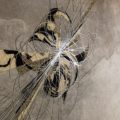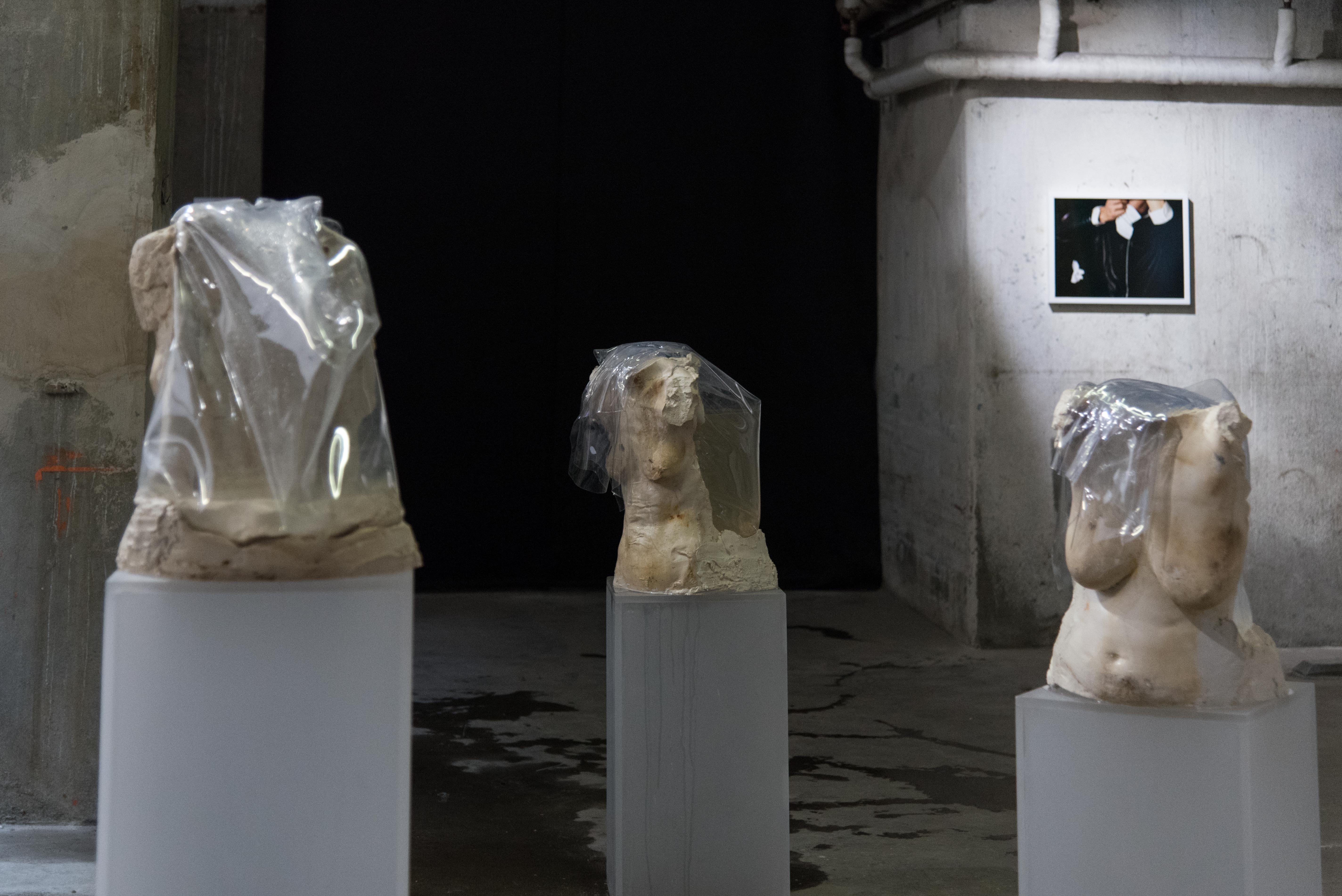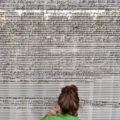Christine Safa, Remember colour
For pure painting, for the love of colour, its materiality and contrasts, for the reflections of light on the reliefs of a face or landscape, for the intense contrast of blue and orange, green and yellow, for the many shades of brown of wavy hair screened by the rays of the sun, for that sun that is best appreciated with closed eyes and whose comforting warmth extends beyond the edges of the canvas to irradiate the spectator of Christine Safa’s self portrait… There are a thousand reasons to love the painting of this young artist, who has just graduated from the Beaux-Arts de Paris.
A thousand reasons to let yourself be carried away by her matte and thick touches, which recompose on the canvas what she has seen and loved, transfiguring a nature whose tranquility has captivated and enchanted her, as if by magic, with juxtapositions of supernatural shapes and colours, that she did not even dare to imagine on her palette. Christine Safa, “the woman who walked in colour”. I borrow the title from Georges Didi-Huberman, who describes the long crossing of Moses in the yellow colour of the desert, then the mental one of James Turell in the rocky orange of the painted Californian desert that the artist chose as his refuge a few years ago. The routes described by Georges Didi-Huberman retrace the stripping down necessary for those who want to see and appreciate pure colour, the obstacles to overcome to get there. Christine’s answers it as if it were an echo, it is him I would like to tell you about here.
Because defending pure painting today is not an easy task. And, it’s quite surprising, even more so when you’re lucky enough to have a dual nationality, his first teachers tell him. Christine is French and Lebanese. Her parents grew up in Beirut, a city in which she has spent every summer since she was a child.
“But you’re Lebanese? Paint the war! Explosions, bombs and planes… You know Beirut, don’t you? »
The bad advice of a very good teacher has launched Christine in a quest for identity and legitimacy. Through her art, the apprentice artist sought to appropriate a story that was transmitted to her by her parents, orally, with passion. She has completed with assiduous research and the reading of geopolitical books the stories, partial, that she has collected, voluntarily or not, in the hope of having a more global vision of this country, Lebanon, that she loves and wants to know. At first, she wanted to share a story. On newspapers she found in her grandparents’ house, collected by her grandfather since 2006, she painted bombs and planes, smoke, war… She tried to make her own a story that stuck to her skin, an identity whose outlines she could not really grasp. One wanted her to be the spokesman for a cause, a cause that is apparently still under the bombs, tirelessly at war….
“Paint bombs,” they say, “you have to tell your story! »
Sharing memories, sorrows, telling them, explaining them, exorcising them, a mission for painting? Yes, without a doubt! But what is Christine’s real story? And how can we make our own what has been passed down as a legacy, which still needs to be appropriated? How can we talk about a conflict that we have not experienced in the end? And is it true to say that she didn’t experience it?
At the Jeu de Paume she discovered a discussion between Etel Adnan and Joana Hadjithomas. The two artists, both Lebanese, speak of Smyrna, a city whose beauty Etel Adnan’s mother told her about as well as its similarities with the Lebanese landscapes. The two artists reveal to Christine that it is possible to grieve at the second degree. In her notebook, she transcribes a piece of the exchange:
“Joana: I absorbed my parents’ grief
I absorbed it and built it up
Etel: You absorbed the nostalgia of your parents possessed by the loss
A lost paradise
A paradise is no longer a place
Joana: I wondered why I was so attached to it, why I was so concerned.”
Finally Christine finds a way to make her story her own but, above all, to let go. Being Lebanese does not necessarily mean talking about war. Christine will talk about the Lebanon she knows and loves.
“Be careful that your speech doesn’t become stronger than your paintings!”
The very good advice of another very good teacher, solemnly pronounced during his second year at the Beaux-Arts, opens a path and delivers her. She absorbed the grief of her parents, and found the balance between the two forces that pulled her: the call of a fantasized Lebanon – by her as much as by the others – and that of painting. Pure painting is the quest she wants to give herself! Poetry and magic. Remember Lebanon, the summers in Beirut, the lights so different, supernatural but real, the contrasts of the earth, the sky, here and there barely distinct by a horizon line. This is fluctuating, everywhere visible in the city of Beirut, this so fertile line that gives birth to the sky and the sea.
Little by little, Christine abandoned her geopolitical books for the notebooks of Bonnard, Gauguin and Matisse. Airplanes and bombs for landscapes and faces. Christine knows Beirut, yes. The cobalt blue of its July sky and the burnt ochre of its beach at 2 p.m.; the fiery yellow, so comforting, of its 4 p.m. sun; the warmth of its supernatural rays, which from golden rays become – it is surprising – purple when, at 6 p.m., they pierce the orange-green branches of the cypress trees with light. In her notebook, Christine notes the hours at which nature composes for her the paintings that fascinate her, which she wants to share. She describes in detail the impacts of light and the strokes of colour she observes. With her mineral and sandy painting, she immortalizes on canvas the moments of eternity of fleeting and ephemeral images, and makes the pleasure of their tasting last.
Cypresses are eaten by the twilight light, devoured by the sun, digested by Christine. Her appetite as a painter is insatiable. She eats the colours, cooks with the pigments, mixes them herself and concoct them with tenderness. Her colours are solid, her canvases full of material. In this way she creates a body, physical, that she can embrace, and in which she melts herself, entirely. Remember the colour and be part of it.
> www.christine-safa.com






